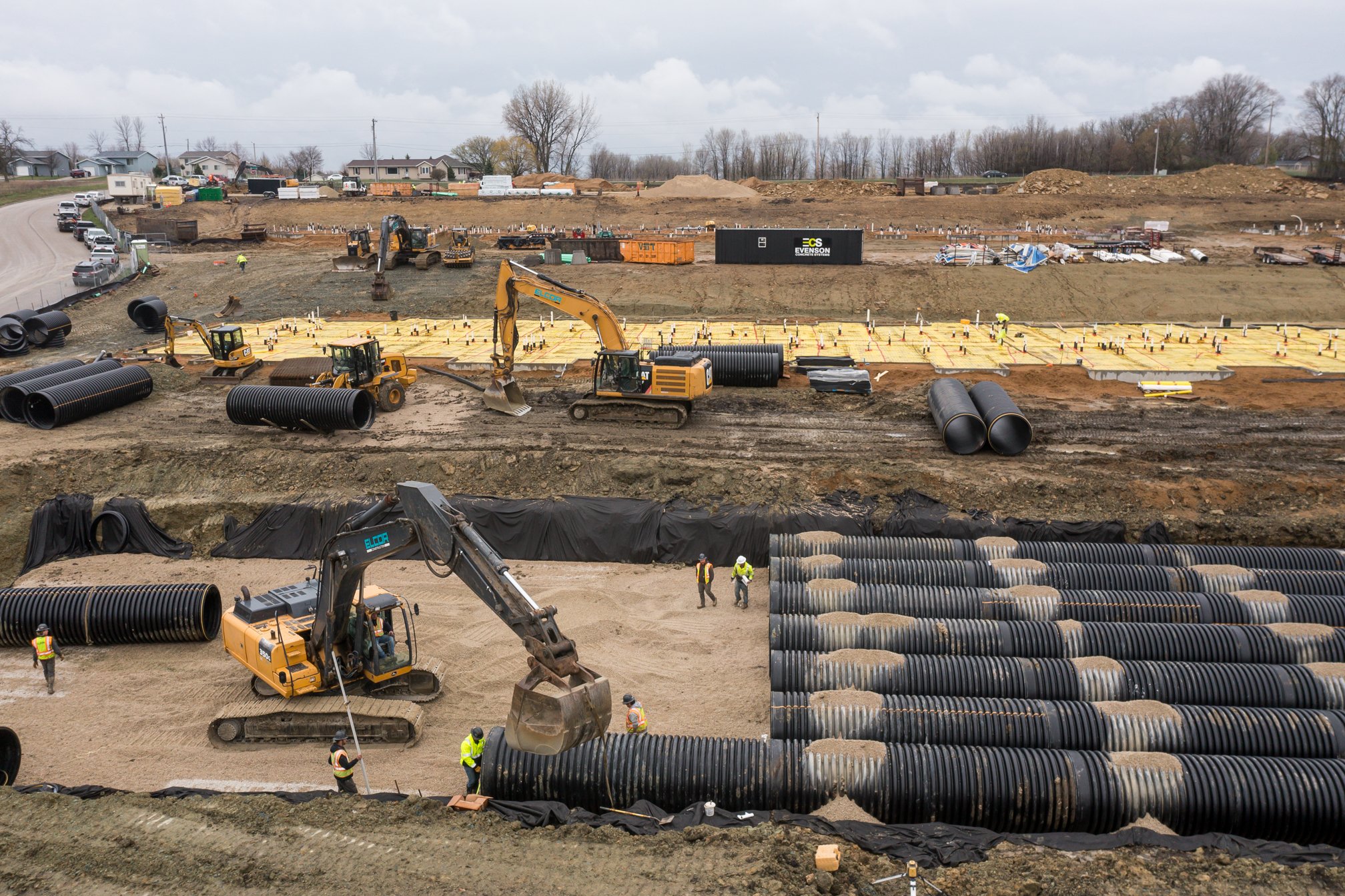The Concrete Construction Process: A Step-by-Step Guide
Concrete is the backbone of modern construction, used in everything from residential homes to towering skyscrapers. Its durability, versatility, and affordability make it one of the most popular building materials. But what does the concrete construction process involve? In this comprehensive guide, we’ll take you through each step of the process, ensuring you have a clear understanding of how concrete structures are built from start to finish.
Inside the blog:
Step 6: Finishing and Surface Treatments
Step 7: Quality Control and Inspection
Step 8: Maintenance and Longevity
Step 1: Planning and Design
Before any concrete is poured, thorough planning and design are crucial. This stage involves:
Site Analysis – Engineers and architects analyze soil conditions, environmental factors, and load-bearing capacities.
Blueprint Creation – Detailed plans are drawn to ensure structural integrity.
Permit Acquisition – Local building codes and regulations must be met before construction begins.
Material Selection – Choosing the right type of concrete mix, reinforcements, and additives to suit the project’s needs.
Step 2: Site Preparation
Proper site preparation ensures a stable foundation for the concrete. The key tasks in this phase include:
Clearing and Excavation – Removing vegetation, debris, and topsoil to create a level worksite.
Soil Compaction – Compacting the soil to prevent settlement and foundation failure.
Formwork Installation – Wooden, metal, or plastic forms are placed to shape the concrete as it sets.
Reinforcement Placement – Steel bars (rebar) or mesh are laid inside the forms to strengthen the concrete.
Step 3: Mixing the Concrete
The mix's quality determines the final structure's strength and durability. Concrete is composed of four primary materials:
Cement – The binding agent that hardens and holds the mixture together.
Aggregates – Sand, gravel, or crushed stone provide bulk and stability.
Water – Essential for the hydration process, which enables the cement to harden.
Additives – Chemical or mineral substances that improve workability, durability, or curing times.
Concrete can be mixed on-site or delivered from a ready-mix plant, depending on the scale of the project.
Step 4: Pouring the Concrete
Once mixed, the concrete is transported to the site and poured into the prepared forms. The pouring process requires careful execution to avoid issues such as air pockets, weak spots, and inconsistencies.
Placing the Concrete – The mix is poured in layers to ensure uniformity.
Vibration and Consolidation – Mechanical vibrators remove air pockets and ensure even distribution.
Screeding – A straight edge is used to level the surface and remove excess concrete.
Floating – A float smooths the surface and brings fine aggregates to the top.
Step 5: Curing and Hardening
Curing is one of the most critical steps in the concrete construction process. It ensures that the concrete achieves its full strength and durability.
Moisture Retention – Watering or covering the surface with plastic sheeting helps retain moisture.
Curing Compounds – Chemical sprays can slow down moisture evaporation.
Temperature Control – Concrete must be protected from extreme heat or cold to prevent cracking.
Curing Time – Typically, concrete reaches 70% of its full strength in seven days and full strength in 28 days.
Step 6: Finishing and Surface Treatment
Once the concrete has been set, additional finishing touches may be applied depending on the desired look and function.
Troweling – A smooth finish is achieved using a hand or power trowel.
Texturing – For slip resistance, textures like broom finishes or stamped patterns can be applied.
Joint Cutting – Expansion joints are created to prevent cracking as the concrete expands and contracts.
Sealing and Coating – Sealers protect the concrete from moisture, stains, and chemical damage.
Step 7: Quality Control and Inspection
Before a concrete structure is considered complete, quality control tests and inspections ensure it meets industry standards.
Slump Test – Measures the consistency and workability of fresh concrete.
Compressive Strength Test – Assesses the strength of cured concrete using sample cylinders.
Surface Inspections – Checks for cracks, defects, or inconsistencies in the finish.
Structural Integrity Assessment – Engineers may conduct load-bearing tests if necessary.
Step 8: Maintenance and Longevity
Even though concrete is durable, regular maintenance extends its lifespan and prevents costly repairs.
Cleaning – Routine washing removes dirt, stains, and debris.
Sealing – Reapplying sealant every few years protects against moisture and wear.
Crack Repairs – Filling minor cracks prevents larger structural problems.
Reinforcement Checks – Ensuring rebar is not exposed or corroding maintains strength.
Why Choose Concrete for Construction?
Concrete remains the preferred building material for several reasons:
Durability – Withstands weather, fire, and heavy loads.
Versatility – Suitable for roads, bridges, buildings, and more.
Energy Efficiency – Provides excellent thermal mass, reducing heating and cooling costs.
Sustainability – Recyclable and often made with eco-friendly materials.
Cost-Effectiveness – Requires low maintenance and has a long lifespan.
Conclusion
The concrete construction process is a meticulous yet rewarding journey that transforms raw materials into sturdy, long-lasting structures. Each step—from planning and preparation to pouring, curing, and maintenance—plays a vital role in ensuring the final product meets high standards of strength and durability. Whether for residential, commercial, or industrial applications, understanding this process helps builders, contractors, and property owners make informed decisions for their projects.
For expert insights and professional assistance in your next concrete construction project, contact Evenson Concrete System. We specialize in high-quality concrete solutions tailored to your specific needs.


